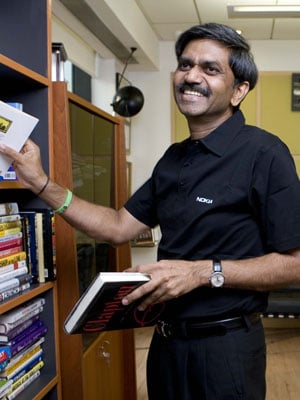
D.Shivakumar: Learning from Criticism
If you have a different idea to tackle a tough situation, you come out as a better leader
I read Concept of the Corporation by Peter Drucker two decades ago, when I was just finishing with my MBA.
Peter Drucker had been invited by GM to study the company and give his comments. This book was about that study, and the fundamentals of how a business is managed. It sparked thoughts in me on how a corporation should be.
I also learned about Alfred Sloane, then-president of GM. He had come in through an acquisition of a ball bearing company, but went on to lead GM’s fight against Ford. I have drawn a lot of lessons from Sloane as a leader. He demonstrated professionalism, responsibility and maturity when GM executives wanted to kill Drucker’s book. He stepped in and overruled them all, saying that GM had told Drucker that he could write whatever he wanted and they would not go back on their word. He was clear that you need to let critics have their say and you need to learn from it. Through a corporation’s life, you will have yea-sayers and nay-sayers; you should neither get upset when there are negative comments about your company, nor go over-the-moon about praise. This set me off on a journey to read a lot about Drucker, Sloane, and the automobile sector. How a company is run, the role of an effective chief executive officer; this is what I learned and this is why it is a defining book for me.
Later, in 1992, when I was leading a regional team in HUL, I read Control your Destiny Or Someone Else Will: How Jack Welch Is Turning GE Into The World’s Most Competitive Corporation by Noel M. Tichy and Stratford Sherman. It focussed on today’s corporation and the energy required for a leader: Edge and execution, boundary-less-ness, breaking silos, valuing people, how to deal with non-performers.
The concept of boundary-less-ness and taking the hierarchy-form off is something I took from this book. For example, in Nokia, only three layers exist between me and the beginning rank. Two other important learning points were about the importance of two-way dialogue for the leader and the concept of coaching people.
These are very different books, but the important thing is to draw the right lessons apply them. What is ‘right’? Whatever you apply should be in line with the organisation you work for; and as a leader, you should be comfortable with the lesson you draw, because it’s very important to be true to yourself. You cannot fake leadership — Sloane cannot be Welch, Welch cannot be Sloane — you must be clear about your principles and how you can do it in your own style. Whatever I have read of Sloane, I think he was a leader who was willing to listen, accept a contrary point of view, build consensus and finally take a call, saying I am accountable. In whatever situation you are in, people are your most important asset. You need to value people, keep confidence level up, and think smarter in your competitive background. When faced with a tough situation a lot of people think: Throw money at it. I think it is the ideas that matter. If you have a different idea to tackle a tough situation, you come out as a better leader.
One problem with reading is that most people stop once they are out of college. As I read, I highlight and summarise important things. I usually make a presentation of about 50 slides and send it out to my team.
(As told to Nilofer D’Souza)
(This story appears in the 30 November, -0001 issue of Forbes India. To visit our Archives, click here.)





